Experiencing Philly Flower Show through scent, touch, careful description
Listen-
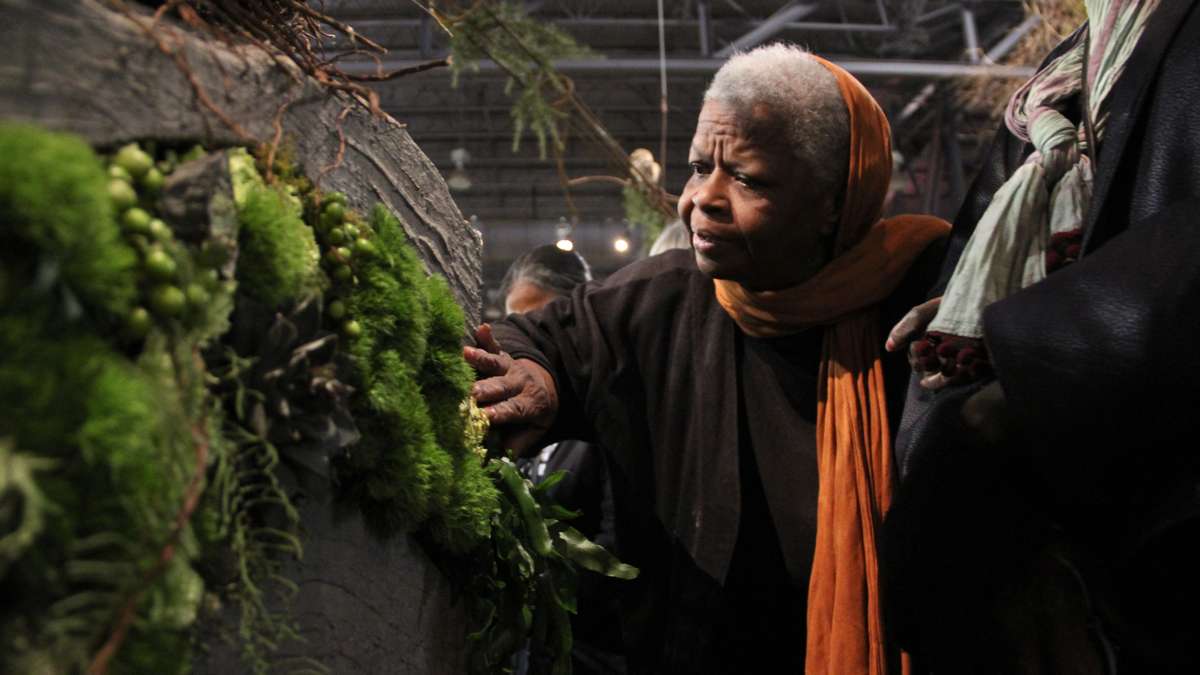
Eleanor Childs runs her fingers along a moss-covered wall during a tour for the blind at the Philadelphia Flower Show. (Emma Lee/WHYY)
-
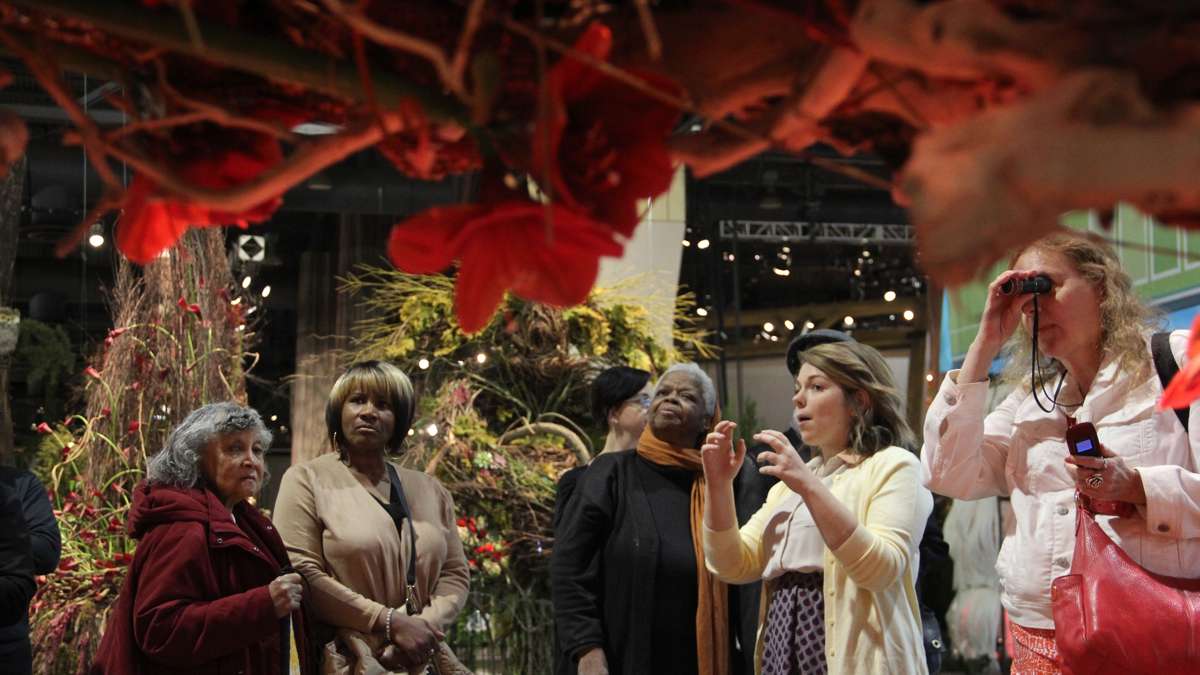
Sensory tour guide Nicole Sardella describes the exhibits in vivid detail for her blind and partially sighted group. (Emma Lee/WHYY)
-
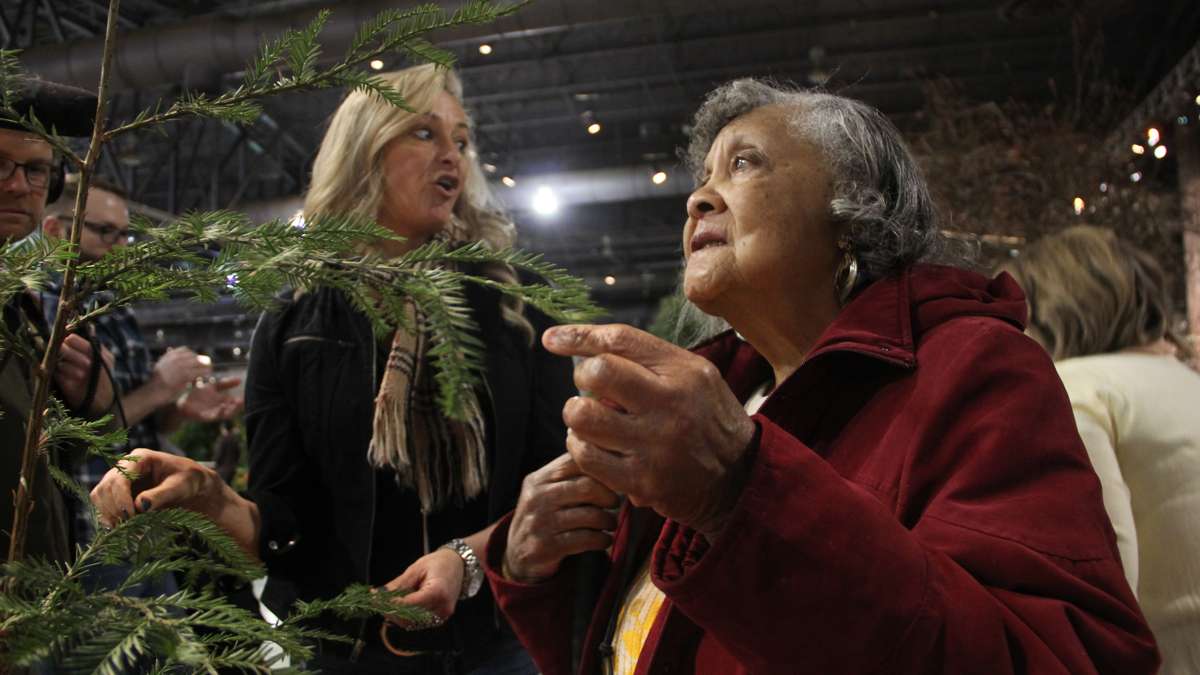
Lavera Diggins feels the needles of a redwood sapling. (Emma Lee/WHYY)
-
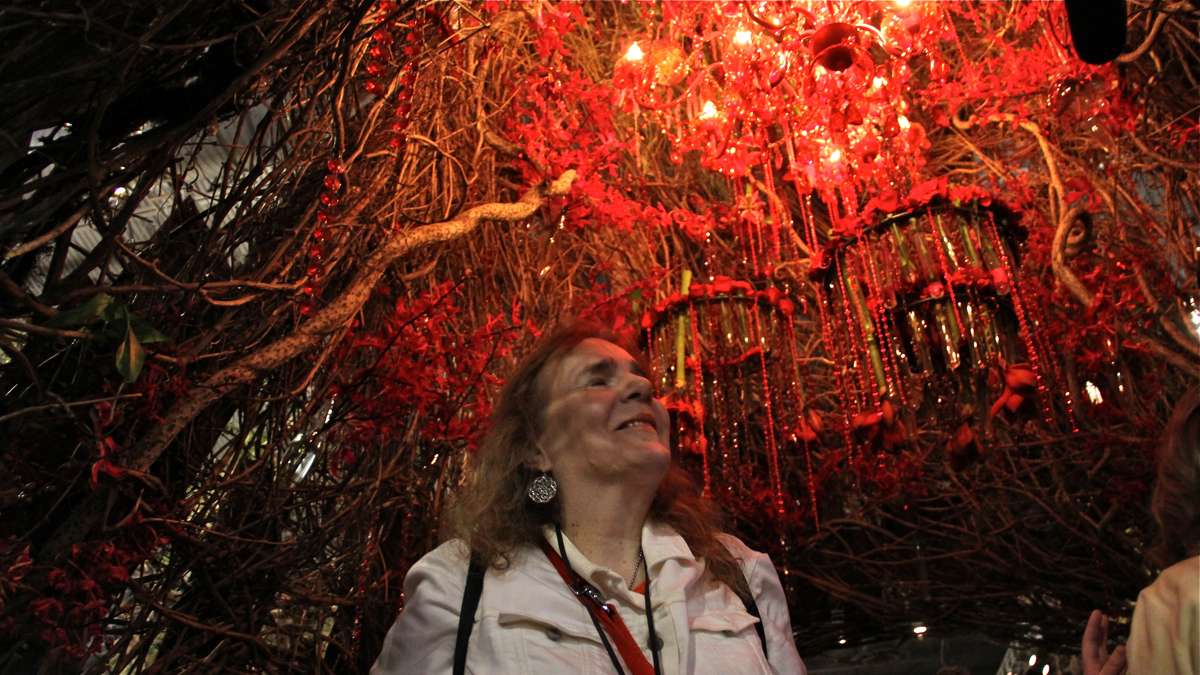
Ebba Slater stands inside the hollow of a giant redwood tree, hung with flower-draped chandeliers. (Emma Lee/WHYY)
-
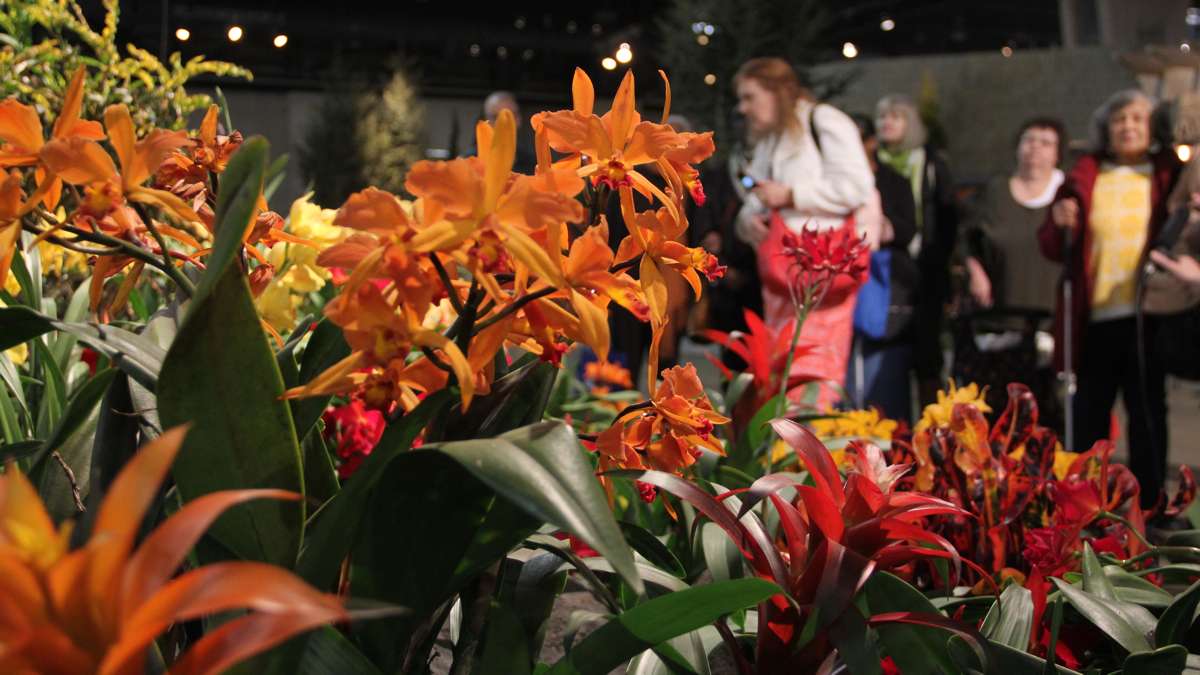
Tour participants listen as a guide describes the bright colors and shapes used to suggest lava in an exhibit based on Hawaii Volcanoes National Park. (Emma Lee/WHYY)
-
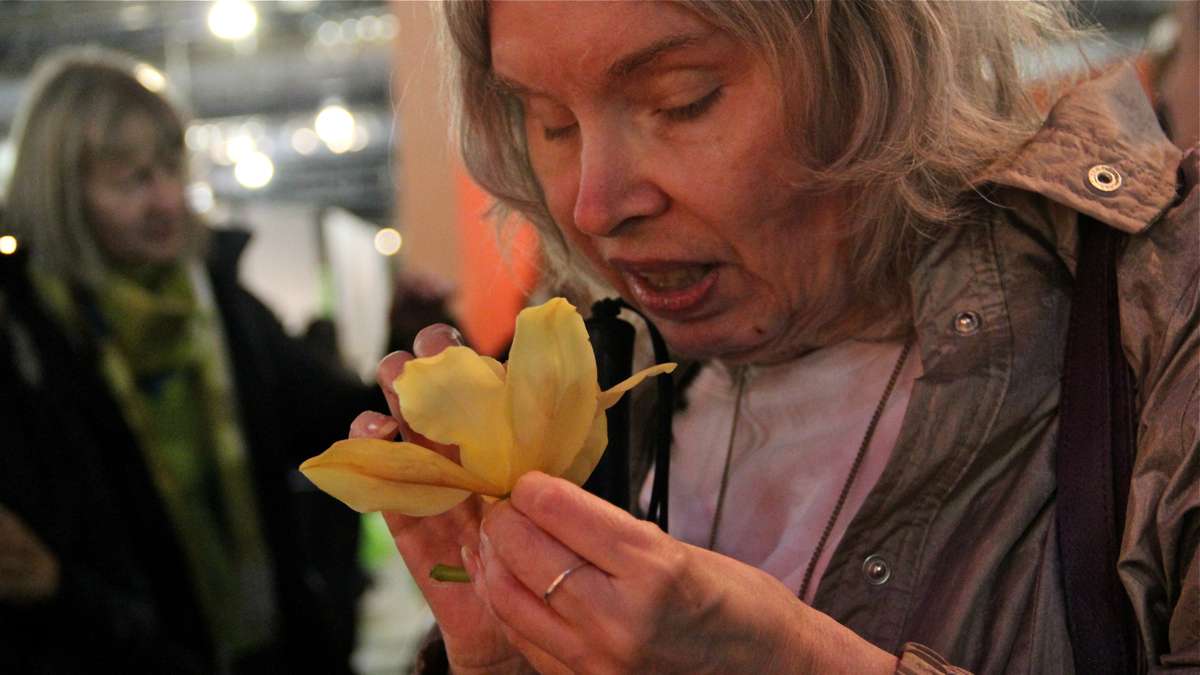
Carla McCollaum examines a yellow orchid through smell and touch during a sensory tour for the blind at the Philadelphia Flower Show. (Emma Lee/WHYY)
-
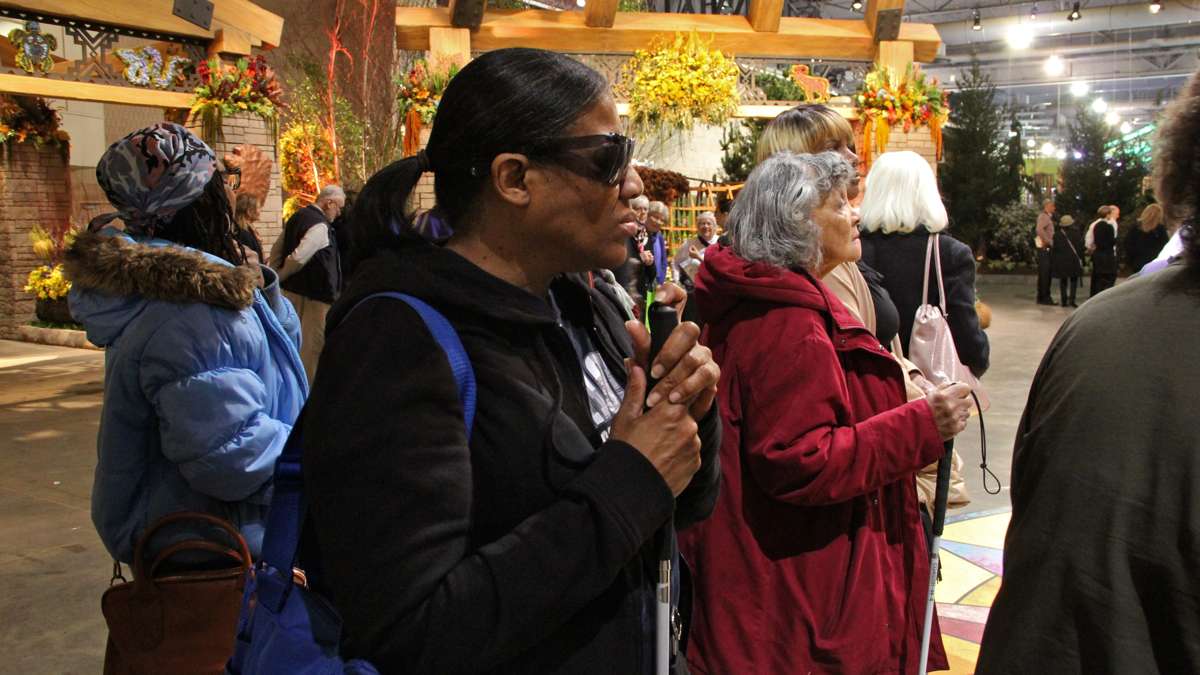
Blind visitors arrive at the Philadelphia Flower Show exhibit hall for a guided tour. (Emma Lee/WHYY)
The Philadelphia Flower Show continues this week at the Pennsylvania Convention Center, where a quarter-million people are expected to experience the lavish garden exhibitions with tens of thousands of flowers.
Some of those attendees are unable to see any of those blooms.
Nicole Sardella led about a dozen people with various visual impairments — from severe blurring to only light perception to total blindness — through the major exhibits of the Philadelphia Flower Show.
“We’re going to stop here, and I’m going to describe what is happening in this exhibit,” said Sardella in front of a re-creation of Hawaii Volcanoes National Park. She attempted to describe flowers arranged to look like a lava flow.
“Warm color orchids — yellows and pinks and oranges,” said Sardella. “They are not typical orchids. The petals are curled or crimped, smaller, thinner, all these different varieties of orchids.”
Sardella has little expertise in flowers, Hawaii or volcanoes. She does not know the scientific names of flowers, where they come from or why they are arranged like this. She offers no interpretation or insight. Her job is strictly to describe how things appear.
“See it, come up with words for what you see, and say it,” she said. “I don’t want my opinion to influence what people think.”
The designer of the Hawaii exhibit, Suzy Stepnowski of Waldor Orchids in Linwood, New Jersey, was on hand to describe what could not be seen — that not all the orchids on display are native to the islands; they were sourced from around the world; and that the display is an homage to the Hawaiian goddess of fire, Pele.
“This is how an orchid feels,” said Stepnowski, passing around some flower petals for the group to touch. “They are very waxy. A lot of people think of them as delicate. They are not. They have a waxy coating, and the petals are very firm.”
Lavera Diggins rubbed an orchid petal between her fingers. She is blind, and has never before been to the flower show.
“The smell. The smell is gorgeous,” said Diggins. “So spacious, so wide open. It’s really spacious out here. But mostly the smell.”
Diggins is a gardener. As a client of Associated Services for the Blind & Visually Impaired, she tends flower beds at Fairmount Park’s Horticulture Center.
“We plant bulbs in the fall, and spring flowers start coming up in April. Then we plant summer flowers,” said Diggins. “Our garden is beautiful. You have to come see it.”
The sensory tour was coordinated by Art Reach, an organization making cultural activities accessible to those with physical and financial difficulties. This is the third time Art Reach has brought clients of Associated Services for the Blind & Visually Impaired to the flower show.
Art Reach director John Orr said putting the flower show into words is a tough nut to crack, but that if he can do it there he can do it anywhere.
“It’s hard to describe this to people who have full sight, so to do this for visual impaired — pretty amazing moment,” said Orr. “If you can verbally describe the Flower Show — that’s a high bar.”
It’s a bar Orr hopes to leverage with other cultural venues, to demonstrate that accessibility can be achievable with minor alterations.
Ebba Slater, who has partial vision in one eye, uses a small telescope on a cord around her neck to see details. For years, she has had every intention of going to the flower show.
“I thought, ‘One day you might be able to go, so you better get your you-know-what down there,'” she said. “I used to run around Philadelphia, but when you’re 66 instead of 26, you’re not as brazen anymore. I need a group to go with.”
WHYY is your source for fact-based, in-depth journalism and information. As a nonprofit organization, we rely on financial support from readers like you. Please give today.





